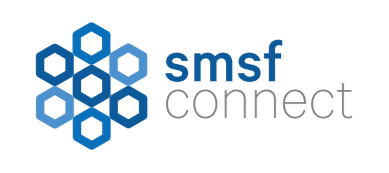Content provided by Thinktank
Written by Per Amundsen, Head of Research, Thinktank
If there has been a common refrain from critics of Limited Recourse Borrowing Arrangements (LRBAs) since their inception in September 2007, it’s that self-managed super funds (SMSFs) using this debt instrument could be fatally exposed in economic or financial crises. Yet 13 years on and two crises later, these predictions have yet to be realised.
There are reasons for this (of which more later), but if any crisis should have revealed any shortcomings with LRBAs then arguably it was COVID-19 – a health crisis than has induced Australia’s biggest and most rapid economic downturn since the Great Depression of the 1930s.
Those businesses carrying a disproportionate share of the economic burden because of people being forced to socially isolate, such as retail and hospitality, are in sectors of the economy where many LRBAs can be found. At the height of the pandemic, restaurants were closed, and shopping centres resembled a Hollywood ghost town from an old Western.
Yet the anecdotal evidence – and it must be stressed it’s anecdotal until the ATO statistics unveil what has happened in these past extraordinary four months – suggests that LRBAs have weathered COVID-19 in a manner that should help end the debate about their legitimate role in an SMSF portfolio once and for all.
So, what has been Thinktank’s experience as a major player in the LRBA market during this pandemic? We have found that our LRBA pipeline has been maintained both in terms of actual volume and as a percentage of our overall loan book that has also kept pace with pre-COVID volumes. Indeed, LRBA activity is slightly above the curve in both volume terms and as a percentage of our total lending.
Thinktank would be the first to concede we have been a little surprised by this trend. We expected investors and owner-occupiers to pause while they reassessed the market and their own financial circumstances. Yet the evidence to date confirms this is not the case. Similarly, applications for hardship relief have been fewer than expected. Across the total portfolio, requests to defer payments by SMSF borrowers are running at a markedly lower rate than for standard commercial loan borrowers.
Perhaps more surprisingly, many of those SMSF trustees we have engaged with over the past four months have been expressing quiet confidence that, as the restrictions are eased, that their tenants will be able to resume their rental payments (either as third parties or related parties in business real property transactions), and have informed us they have a near-term time limit on their need for payment relief on their loans.
Even in those sectors of the economy harder hit, such as restaurants, where more time will be required before normal trading conditions resume, they remain confident, as, importantly, do their tenants. Admittedly, a small number have lost their tenants and a longer period of support will be needed to find new ones. In this economic climate, that’s hardly surprising.
So why have LRBAs, on the evidence to date, held up so well. There are many reasons, but, to my mind, three stand out. Contrary to the views of some, most SMSF trustees only take out an LRBA after serious consideration that involves getting specialist advice. Although stories about rogue realtors or property spruikers enticing naïve SMSF trustees into unsustainable LRBAs made good headlines, those few instances, which the regulator continues to act on, contrast with the overwhelming majority of well-considered, properly advised cases where an SMSF has taken on borrowings.
Second, with the exit of the major banks from the LRBA market it meant the smaller lenders remaining typically have far closer relationships with their clients. They mostly know what their clients can or can’t afford. It’s not surprising, therefore, that after the sharp uptake of LRBAs several years ago, their growth has plateaued since June 2017. Thirdly, LVRs have remained conservative, with Thinktank’s average LVR sitting at around 60 per cent.
We fully expect LRBA lending will emerge in good shape post the COVID-19 pandemic and, for many small businesses looking to get back on their feet, a viable debt option. It’s also to be hoped that when the official data provides empirical evidence about what we are observing now anecdotally, that the notion of LRBAs being financially risky in the hands of SMSF trustees is further proven to be unwarranted.


